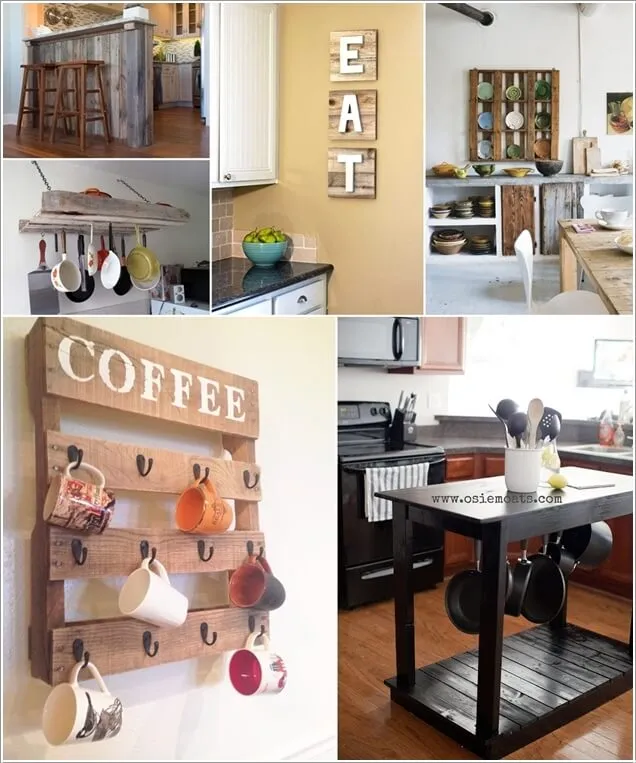Embracing Rustic Charm in Your Kitchen
Rustic kitchen decor embodies a sense of warmth, simplicity, and a connection to nature. It’s a style that celebrates the beauty of imperfection, embracing natural materials and a lived-in aesthetic. Transforming your kitchen into a rustic haven can create a welcoming and inviting space, perfect for both cooking and gathering. The key is to blend the charm of the past with the functionality of the present, resulting in a kitchen that is both beautiful and practical. Rustic design is not just a trend; it’s a timeless approach to interior design that can make your kitchen the heart of your home. With the right rustic kitchen decor ideas, you can effortlessly infuse your space with a sense of character and history, creating a space that feels both comfortable and stylish. Whether you live in a sprawling farmhouse or a cozy city apartment, rustic decor can transform your kitchen into a place of warmth and personality.
Defining Rustic Style
Understanding the core elements of rustic style is essential before embarking on your kitchen transformation. At its heart, rustic design emphasizes natural materials, such as wood, stone, and metal. These materials are often left in their raw or lightly finished state, highlighting their inherent textures and imperfections. The color palette typically draws inspiration from nature, with earthy tones like warm browns, creams, greens, and muted blues dominating the space. Rustic style often incorporates vintage or antique pieces, adding character and a sense of history to the kitchen. The overall aesthetic is one of relaxed elegance, where comfort and functionality are prioritized. It’s a style that embraces the idea that things don’t have to be perfect to be beautiful. This embrace of natural elements and simplicity creates a kitchen that feels both cozy and inviting.
Key Elements of Rustic Kitchen Decor
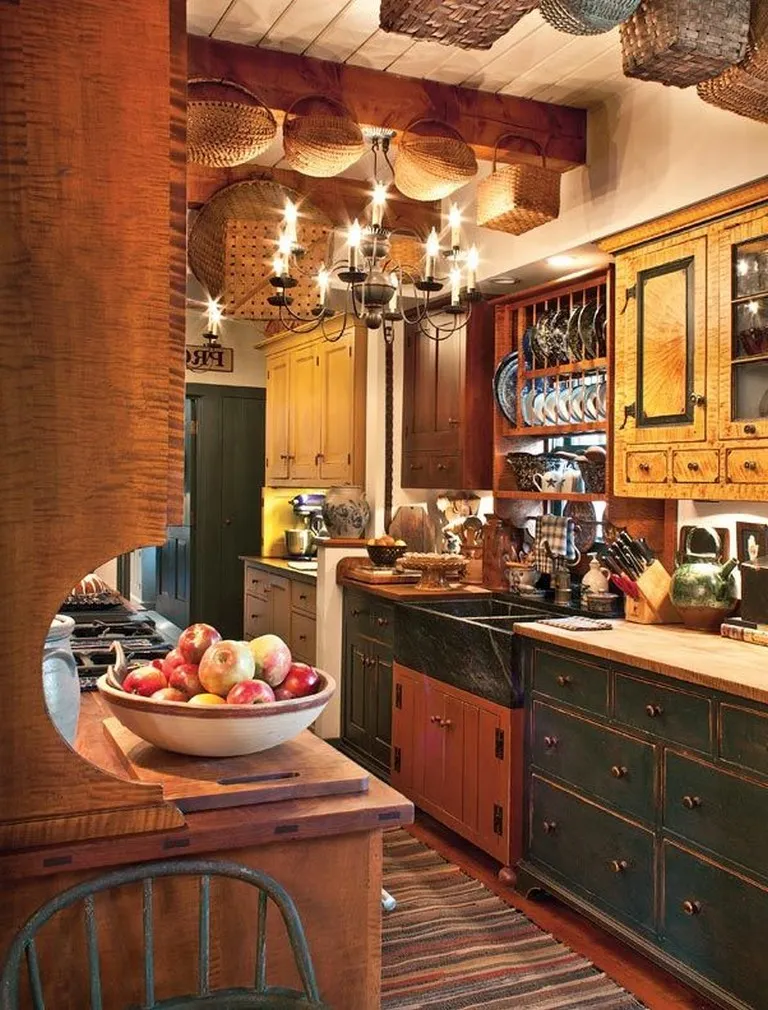
Several key elements define a rustic kitchen, each playing a vital role in creating the desired aesthetic. These elements, when combined thoughtfully, create a cohesive and charming space. From the color palette to the choice of furniture and accessories, every detail contributes to the overall rustic vibe. Understanding and incorporating these elements will help you achieve a truly authentic rustic kitchen design. It’s about creating a space that feels both functional and beautiful, where you can enjoy the simple pleasures of cooking and gathering with loved ones.
Color Palette and Textures
The color palette of a rustic kitchen typically draws inspiration from nature, featuring earthy tones that evoke warmth and tranquility. Think of creamy whites, soft grays, warm browns, and muted greens. These colors provide a neutral backdrop that allows the natural textures of wood and stone to shine. To add depth and visual interest, consider incorporating accents of terracotta, deep blues, or even pops of red. Texture plays a crucial role in creating a rustic aesthetic. Rough-hewn wood, exposed brick, and textured fabrics add depth and visual appeal. Layering different textures creates a sense of warmth and coziness, making your kitchen feel inviting. The use of natural fibers like linen and wool can also enhance the tactile experience of the space.
Materials & Finishes
The choice of materials is paramount in rustic kitchen design. Wood is a cornerstone, whether it’s used for cabinets, countertops, or flooring. Reclaimed wood is particularly desirable, as it adds character and a sense of history. Stone is another essential element, often used for countertops, backsplashes, or even flooring. Consider using natural stone like granite or soapstone, or opt for a more affordable alternative like faux stone. Metal accents, such as wrought iron or copper, can add a touch of industrial charm. Finishes should be kept natural and minimal, allowing the beauty of the materials to speak for themselves. Avoid overly polished surfaces and embrace the imperfections that add character. The aim is to create a space that feels organic and timeless, where the materials tell a story.
Furniture and Fixtures
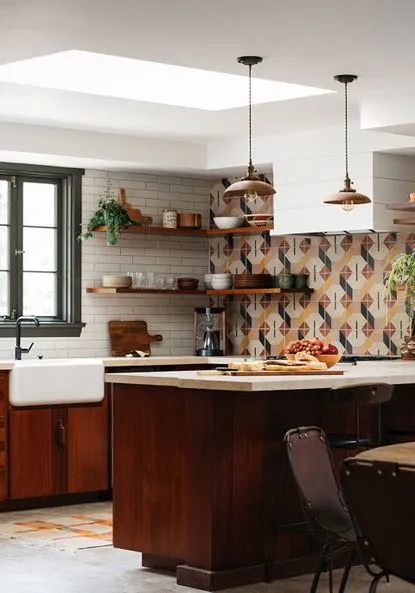
The furniture and fixtures you choose significantly impact the overall rustic aesthetic. Opt for pieces made from natural materials, such as solid wood tables, wooden chairs, and open shelving. Consider incorporating vintage or antique pieces to add character and charm. These pieces can be repurposed or simply left in their original state to create a unique and inviting space. Embrace the beauty of imperfection by choosing furniture that shows signs of wear and tear. This adds to the rustic vibe and creates a sense of history. When selecting fixtures, look for items with a simple, functional design. Avoid overly ornate or modern pieces, and instead, choose items that complement the natural materials used throughout the kitchen.
Choosing the Right Kitchen Table
The kitchen table is often the focal point of a rustic kitchen. Choose a table made from solid wood, preferably reclaimed or distressed to add character. A farmhouse-style table with a large, rectangular top is a classic choice, perfect for family meals and gatherings. Consider a table with a pedestal base or a trestle base, both of which add to the rustic charm. The size of the table should be proportionate to your kitchen size, ensuring there is enough space for comfortable seating and movement. If space is limited, consider a smaller table or a kitchen island with seating. The table’s finish should be natural, allowing the wood grain to show through. A slightly weathered look adds to the rustic appeal. Adding comfortable chairs or benches around the table will make it a welcoming place for people to gather.
Selecting Cabinets and Countertops
When choosing cabinets, consider wood options such as oak, pine, or maple. Avoid glossy finishes; instead, opt for a matte or slightly distressed look. Open shelving is a great way to display your rustic decor and add visual interest. For countertops, consider natural stone like granite or soapstone, or opt for butcher block or concrete for a more affordable alternative. The countertops should complement the cabinets and the overall color scheme of your kitchen. The goal is to create a cohesive look that reflects the rustic aesthetic. Simple hardware, such as wrought iron or bronze knobs and pulls, can add to the rustic charm. The choice of cabinets and countertops will set the tone for your kitchen, so choose wisely to create the desired rustic atmosphere.
Incorporating Rustic Accessories and Decor
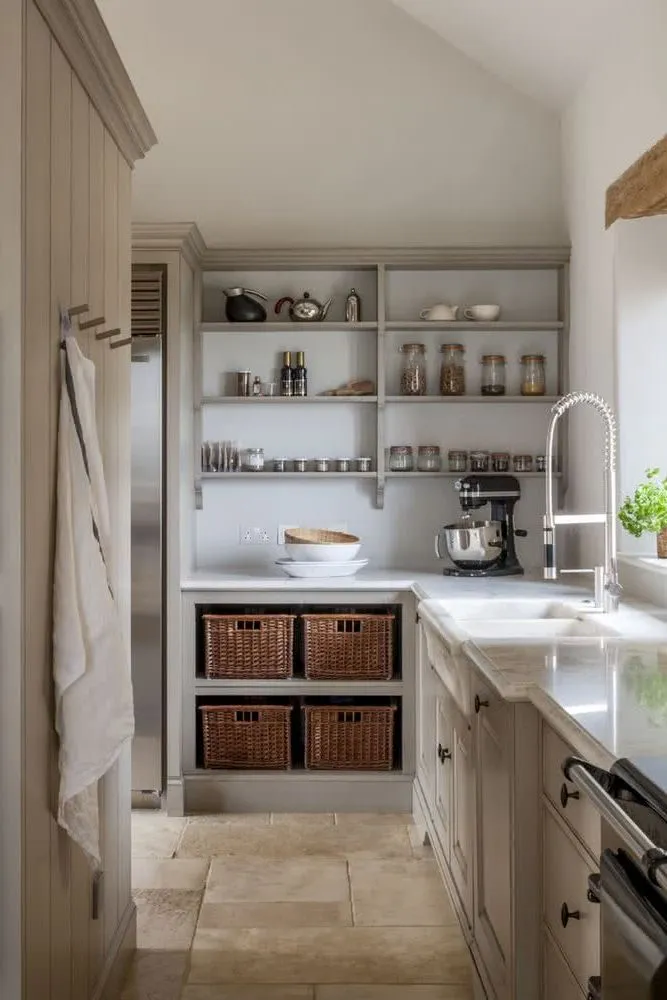
Accessories and decor are essential for completing the rustic look. These items add personality and character to your kitchen, making it feel warm and inviting. From wall decor to lighting fixtures, the right accessories can transform your kitchen into a rustic haven. The key is to choose items that complement the existing elements and reflect your personal style. Layering different textures and materials will add depth and visual interest. Rustic accessories provide a way to infuse your space with charm and personality, making your kitchen a true reflection of your style. Remember to choose pieces that evoke a sense of history and comfort.
Wall Decor Ideas
Wall decor plays a significant role in creating a rustic atmosphere. Consider hanging vintage signs, antique mirrors, or artwork with a natural theme. Wooden shelves are perfect for displaying rustic pottery, cookbooks, or other decorative items. A chalkboard can be used for writing menu ideas or leaving notes for your family. Weathered or reclaimed wood panels can be used to create a rustic backsplash or accent wall. Remember to keep the wall decor simple and uncluttered, avoiding anything that detracts from the overall rustic aesthetic. The goal is to add character and charm without overwhelming the space. The wall decor can be used to infuse your kitchen with personality.
Lighting Fixtures
Lighting is crucial in any kitchen, and rustic kitchens are no exception. Choose lighting fixtures that complement the rustic aesthetic, such as wrought iron chandeliers, pendant lights with a vintage look, or sconces with a farmhouse flair. Exposed bulbs and Edison bulbs add to the rustic charm. Consider using warm-toned bulbs to create a cozy and inviting atmosphere. The lighting fixtures should not only illuminate the space but also add to the overall aesthetic. Layering different types of lighting, such as task lighting, ambient lighting, and accent lighting, will create a well-lit and functional kitchen. The right lighting fixtures can truly enhance the rustic appeal.
Textiles and Soft Furnishings
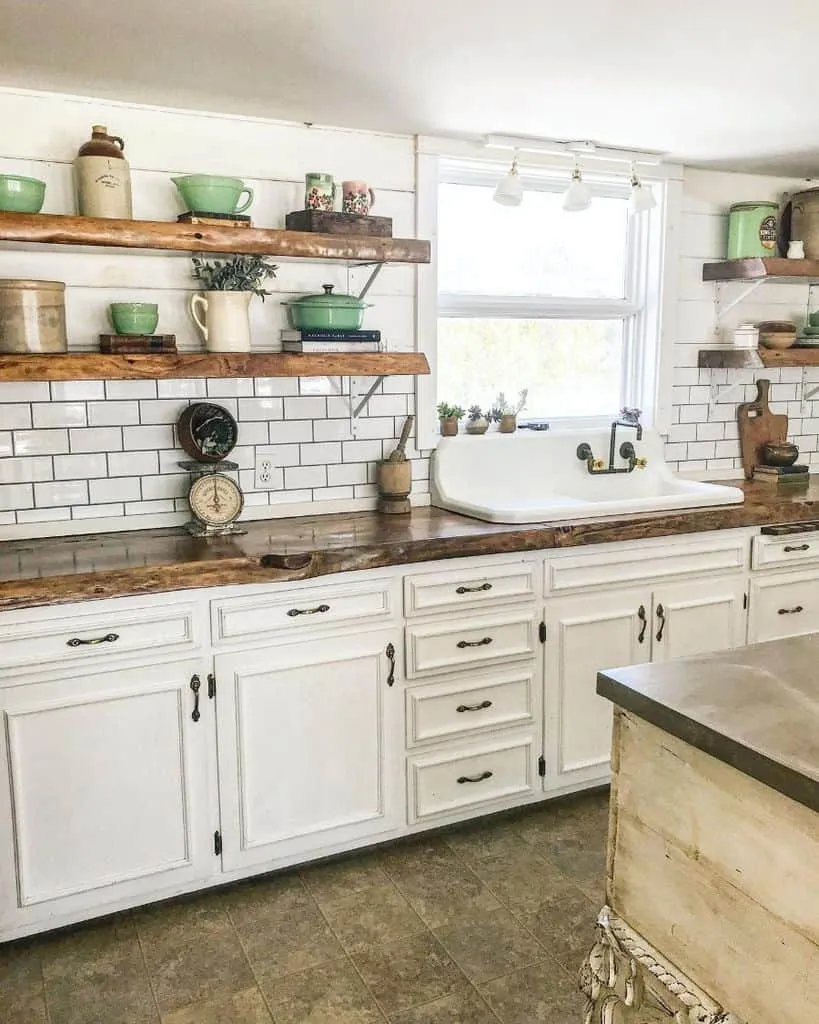
Textiles and soft furnishings can add warmth and texture to a rustic kitchen. Consider using natural fabrics like linen, cotton, and wool. These materials will complement the natural materials used throughout the kitchen. Add a rug with a vintage pattern or a woven texture to the kitchen floor. Kitchen towels, dishcloths, and aprons made from linen or cotton can enhance the rustic appeal. Choose curtains or window treatments in neutral colors or with a simple pattern. Cushions and throws on chairs or benches can also add comfort and warmth. The key is to choose textiles that complement the existing elements and create a cozy and inviting atmosphere. Layering different textures and materials will add depth and visual interest.
Budget-Friendly Rustic Kitchen Transformations
Transforming your kitchen into a rustic haven doesn’t have to break the bank. There are several budget-friendly ways to achieve the desired look. The key is to prioritize projects that have the most impact and to get creative with your resources. With some planning and a little bit of elbow grease, you can create a stunning rustic kitchen without spending a fortune. From DIY projects to thrifting, there are many options available for those looking to create a beautiful and inviting space on a budget. The goal is to create a kitchen that reflects your personal style and provides you with a space you love.
DIY Rustic Decor Projects
DIY projects are a great way to add character and save money. Consider building your own open shelving, which is a simple and affordable project. Paint or stain existing cabinets for a fresh look. Create a rustic backsplash using reclaimed wood or inexpensive subway tiles. Make your own farmhouse-style table from salvaged materials. Repurpose old items, such as mason jars or vintage crates, into decorative storage solutions. Painting, staining, and distressing existing furniture can give it a new, rustic look. DIY projects not only save money but also add a personal touch to your kitchen. The satisfaction of creating something beautiful with your own hands is unmatched. DIY projects enable you to customize your kitchen to your exact specifications and tastes.
Thrifting and Repurposing
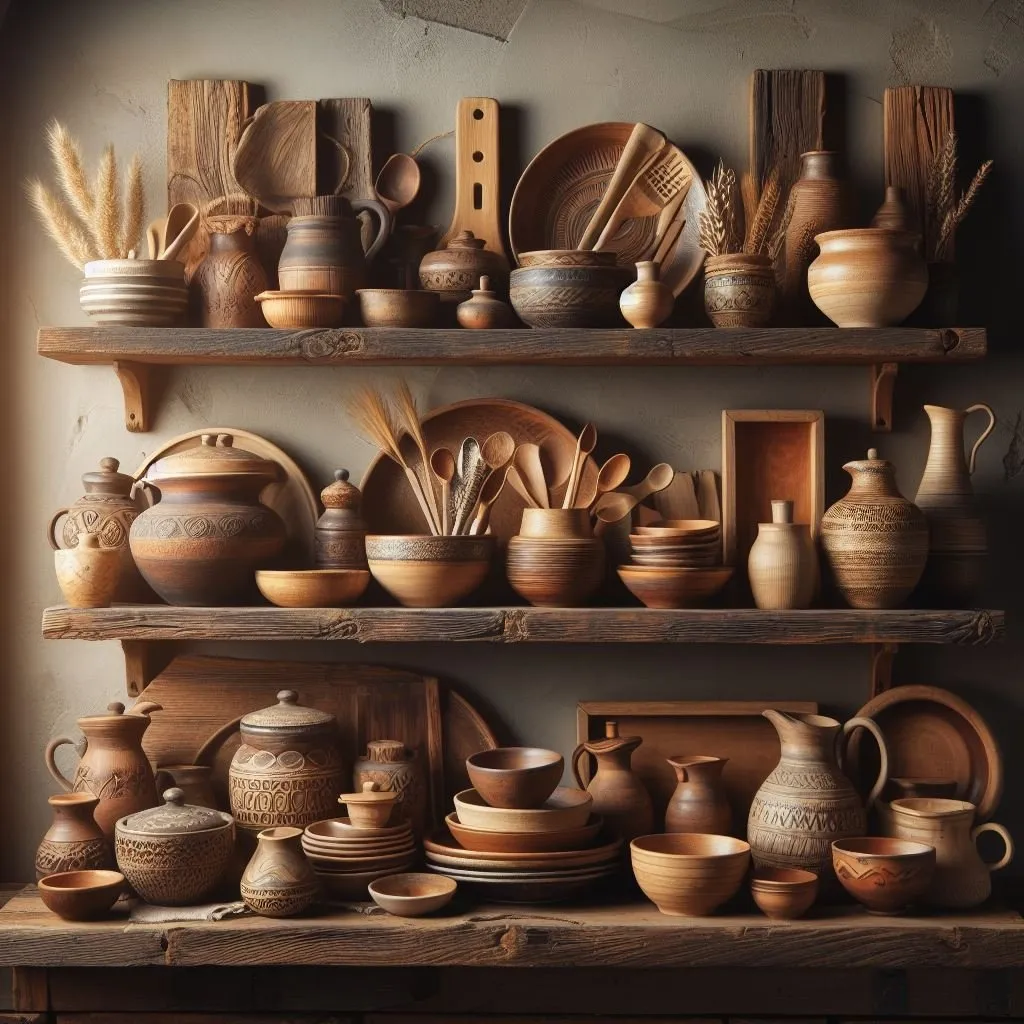
Thrifting and repurposing are excellent ways to find unique and affordable rustic decor. Visit antique stores, flea markets, and thrift shops to find vintage furniture, accessories, and kitchenware. Look for items made from natural materials, such as wood, metal, and stone. Repurpose old items into new and functional pieces. An old ladder can be turned into a pot rack, while vintage crates can be used for storage. Repurposing is not only budget-friendly but also environmentally friendly. By giving old items a new life, you can add character and charm to your kitchen while reducing waste. Thrifting and repurposing also add a unique touch to your kitchen, making it unlike any other.
Maintenance and Care for Rustic Elements
Maintaining your rustic kitchen is essential to preserving its beauty and ensuring its longevity. Proper care will help keep your kitchen looking its best for years to come. From cleaning wood surfaces to protecting metal fixtures, understanding the specific needs of your rustic elements is crucial. Regular maintenance will not only keep your kitchen looking beautiful but also protect your investment. By following these simple tips, you can ensure that your rustic kitchen remains a welcoming and inviting space for years to come. A little care and attention will go a long way in preserving the charm and character of your rustic kitchen.
Cleaning and Preserving Wood
Wood is a key element in rustic kitchens, so proper cleaning and preservation are essential. Regularly dust wood surfaces with a soft cloth. Use a mild soap and water solution to clean spills and stains. Avoid harsh chemicals or abrasive cleaners, which can damage the wood. Apply a wood polish or oil to protect the wood and maintain its natural luster. For reclaimed wood, consider sealing it to prevent further damage. Protect wood surfaces from extreme temperatures and moisture. The right care will keep the wood looking beautiful and prevent it from drying out or cracking. Regular care will keep your wood surfaces in great condition.
Protecting Metal Fixtures
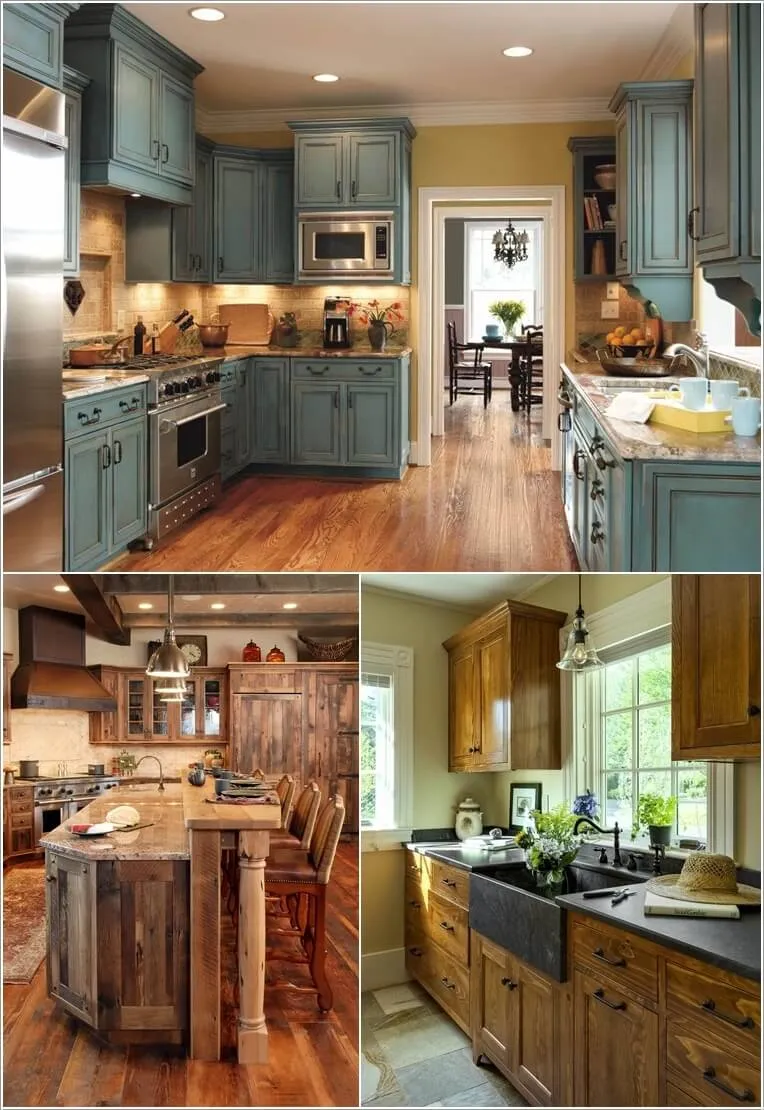
Metal fixtures, such as wrought iron hardware or copper accents, can add a touch of industrial charm to your rustic kitchen. To protect metal fixtures from corrosion, dust them regularly with a soft cloth. Clean metal surfaces with a mild soap and water solution. Avoid abrasive cleaners or harsh chemicals, which can damage the finish. Apply a protective coating or wax to prevent rust and corrosion. If rust appears, remove it promptly with a metal cleaner. Regularly check metal fixtures for signs of wear and tear. Properly caring for metal fixtures will ensure they remain beautiful and functional for years to come. Protecting metal fixtures will help keep them looking their best.
